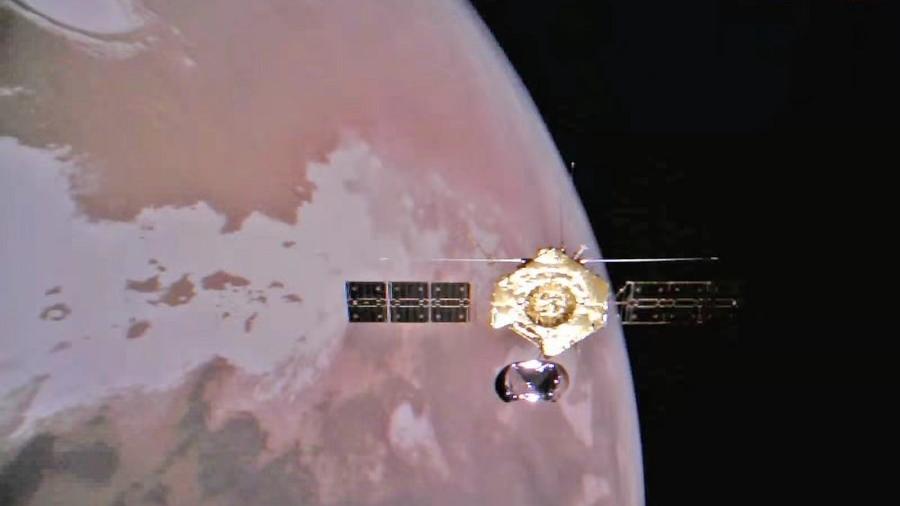 Photo released on Jan 1, 2022 by the China National Space Administration (CNSA) shows the group photo of the orbiter and Mars. (PHOTO / XINHUA)
Photo released on Jan 1, 2022 by the China National Space Administration (CNSA) shows the group photo of the orbiter and Mars. (PHOTO / XINHUA)
The second phase of China's deep-space observation radar network project, dubbed "China Compound Eye", began construction in Yunyang county, Chongqing on Tuesday.
Covering an area of over 300 mu (20 hectares), the second phase of the project aims to construct 25 radars with a 30-meter aperture by 2025. Once completed, it will have the strongest comprehensive performance in the world for a deep-space exploration radar network, enabling the detection of asteroids tens of millions of kilometers away, and providing crucial support for China's defense against near-Earth asteroid impact and planetary science research.
Asteroid impacts are one of the greatest threats to Earth, and deep-space exploration radar is an important defense tool against them
READ MORE: Phase II of China's deep space radar facility starts construction
The construction of the project has three phases. The first phase, consisting of four 16-meter aperture radars, completed its construction in December in Liangjiang New Area, Chongqing, and captured China's first three-dimensional ground-based radar image of lunar craters. The third phase is expected to bring the number of radar units of the "China Compound Eye" project to more than 100.
"The project can be regarded as a breakthrough in radar technology," said Professor Zeng Tao from Beijing Institute of Technology. "Insects' eyes are made up of many small eyes that work together by processing signals through the brain to achieve long-distance observation," Zeng added. Similarly, the "China Compound Eye" comprises multiple radar units that work together to achieve synergic observations, breaking the power and aperture limitations of traditional centralized aperture radar, and enabling deep-space exploration at greater distances, he added.
READ MORE: Chinese deep space research leads to global cooperation
Each radar unit of the "China Compound Eye" has an independent antenna aperture, transmitter, and receiver, and is connected to each other through synchronous distribution links and an intelligent control algorithm subsystem, realizing long-distance observation with small aperture radars.


